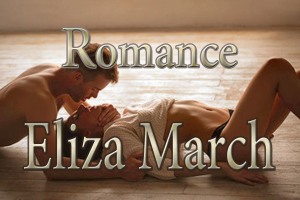Detail has a purpose. It should provide something to the story. It should do something to the reader. The picture I used for my page has that romantic couple in a sexy pose. But in describing it, can you as an writer describe the scene accurately to draw a reader response? It makes me think of a sandy beach (yet it’s a wooden floor, reminiscent of Dirty Dancing) perhaps because of the way the light strikes the two characters. I think heat.

I remember the way the sun feels against my skin as it soaks in, the way it also heats me from the inside without the need for a kiss. Has he just finished kissing her or is he about to kiss her? The sensations before and after are different, and depending on expectation and circumstance, so are the emotions and response. In describing this moment, an author will know which words to choose to evoke the exact reaction intended from the reader.
Can you imagine the moment leading up to this point? Can you begin to imagine what comes next? Everything depends on story. Characters react to story. Having a plot in mind puts the characters in the story, then knowing your characters well determines how they will react. They have options if they’re three dimensional characters, so they may surprise you, and also the reader, with their reaction. How will he touch her? Where? What does he want? What keeps him from taking what he wants? Maybe he will. maybe he won’t. Details like background noises may define the moment. Maybe an interruption sends them into hiding…everything depends on what’s in the author’s head…and where the story has been as well as where the plot is going.
Think about this when you add detail. What he’s wearing or not wearing can set a scene for what comes next. With both of them scantily clad, sexual tension can elevate quickly, especially if they are forced into close proximity. Does he hear her breathing heavily? Does she notice perspiration form on his forehead? “Showing” these details makes “telling” the reader the obvious unnecessary, but it does put the reader in the scene and into the story.
Remember the books that frightened you? I had to take breaks while reading The Shining by Stephen King, I could “not” breathe. Normally, writers give the readers time to breathe between scary scenes. Not King.
Remember the books that turned you on? The one that comes to mind for me wasn’t an erotic book; it was a suspense…All the Queen’s Men by Linda Howard. I was on a plane and deep into the dangerous scene of the book, when the sensual tension began to build. OMG danger and suspense and sex! I was seated in an aisle seat in business class surrounded by men. Lost in the story, I must have been holding my breath because when I finally exhaled, the man across the aisle turned around, winked, and asked, “That good huh?” I flushed to the roots of my hair. But “yes” it was that good, and I immediately bought one of those paperback book covers to hide my choice of titles in the future. (Although that cover had had nothing on it but chess pieces, I wasn’t ready to get teased over something like Fabio’s chest. It’s nothing to laugh at!) Getting lost in the details is a reader’s pleasure and the author’s job. Authors must draw the picture, set the scene, create the mood, string the reader out until they want to scream in pleasure or fear, or cry or laugh, or clap and cheer. Emotion is key. If an author can make you feel something…the job is done. Details create sensations that develop the emotions. Make certain the details you choose move the story forward. Set the stage for the scene.
Happy writing makes happy reading!

